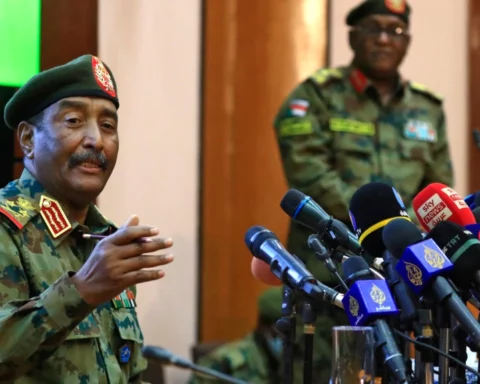“This morning, a plane carrying 32 tonnes of UNHCR emergency aid from our global stockpiles in Dubai landed in Khartoum”, said spokesperson Babar Baloch. “Another airlift is scheduled to leave Dubai on Monday with an additional 100 tonnes of additional relief items…In total, we plan to send four airlifts.”
Growing exodus
Since the start of fighting in Ethiopia’s northern Tigray region in early November, more than 43,000 refugees have crossed into Sudan.
People have sought shelter amid reports of a heavy build-up of tanks and artillery around regional capital Mekelle, following the Ethiopian Government’s ultimatum to forces loyal to the Tigray People’s Liberation Front (TPLF) to surrender, which has reportedly expired.
On Tuesday, UN Secretary-General António Guterres expressed deep concern over the unfolding situation, before urging “the leaders of Ethiopia to do everything possible to protect civilians, uphold human rights and ensure humanitarian access for the provision of much-needed assistance”.
In a statement, the UN chief also called for the “free and safe movement of people searching for safety and assistance, regardless of their ethnic identity, across both national and international borders”.
Echoing the Secretary-General’s message, UN High Commissioner for Human Rights Michelle Bachelet, warned that both sides were using rhetoric that was “dangerously provocative and risks placing already vulnerable and frightened civilians in grave danger”.
One million refugees
Even before violence erupted in Ethiopia’s northern Tigray region causing mass displacement, Sudan was already home to nearly one million refugees, mainly from South Sudan.
In eastern Sudan, UNHCR has continued to step up its relief effort, together with national and local partners. “Aid is being mobilized to help refugees, almost half of whom are children”, Mr. Baloch said, citing “complex logistical challenges”.
To date the agency has helped to relocate nearly 10,000 refugees to Um Rakuba site, 70 kilometres inside Sudan, as work continues to put up shelters and improve services. © UNHCR/Olivier JobardA young Ethiopian refugee looks out from a makeshift shelter at a transit site in Hamdayet, Sudan.
© UNHCR/Olivier JobardA young Ethiopian refugee looks out from a makeshift shelter at a transit site in Hamdayet, Sudan.
Family tracing services have been established and these have already reunited many separated refugees.
Mr. Baloch noted that although humanitarian agencies continue to provide shelter and other facilities to help refugees, “more resources are required and Sudan needs international support urgently”.
Inside Tigray, concerns continue to grow for the safety of civilians in Mekelle, home to more than 500,000 people, and some 96,000 Eritrean refugees based in four camps.
No access
“Without humanitarian access, it’s very hard to say what is actually going on, on the ground but there were worrying reports that fighting was getting closer to these refugee camps”, Mr. Baloch told journalists via video link at a regular UN Geneva briefing.
Before the conflict erupted, UNHCR had “regular access to the refugees”, the UNHCR official continued, but “since the start of it, we have lost access”.
Highlighting the refugees’ reliance on humanitarian distributions, Mr. Baloch said that “according to what they have had…they will be running out of food as of Monday”.






